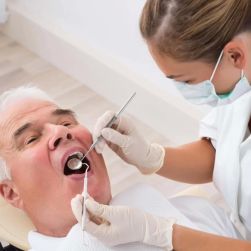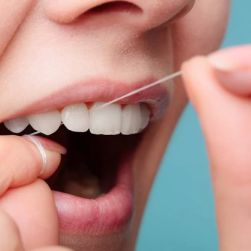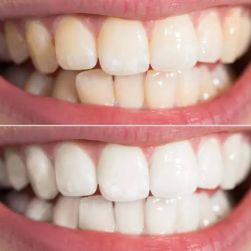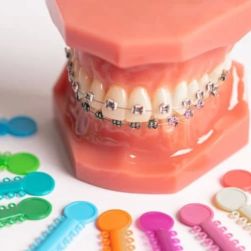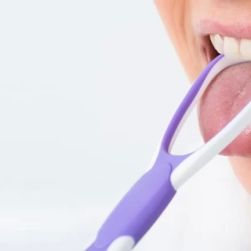Understanding the Right Time to Start Orthodontic Care for Kids
As a parent, deciding when to start orthodontic care for your child can be a daunting task. There’s a lot to consider, from the age of your child to their specific dental needs. As someone who has personally navigated the world of orthodontics with my own children, I understand the questions and concerns you may have. In this article, I’ll guide you through the process, offering insights on when to start orthodontic care for kids, what to expect during treatment, and how early intervention can benefit your child’s smile and overall oral health.
Why Early Orthodontic Care Matters
Orthodontic treatment is often associated with adolescence, when braces are most commonly seen on teenagers. However, did you know that starting orthodontic care earlier can actually prevent bigger dental problems later on? Early intervention can help identify potential issues that may be easier to address when caught at a younger age. This can save time, money, and discomfort down the road.
As a parent, I had no idea that orthodontic care could start so early, but after seeing the benefits firsthand, I’m a firm believer in it. My child’s orthodontist recommended we start monitoring their dental development at age 7, and this proactive approach gave us a head start in ensuring their teeth and jaw would grow properly.
When is the Right Age to Begin?
While the ideal age for orthodontic care varies depending on the child, the American Association of Orthodontists (AAO) suggests that children should have their first orthodontic evaluation by age 7. At this age, a child’s permanent teeth are starting to come in, and an orthodontist can identify any existing or potential problems with alignment, bite, or jaw development.
During this early evaluation, the orthodontist will assess factors such as whether the upper and lower jaws are growing evenly, if the teeth are coming in at the right angles, and whether there are any issues like crossbites, overbites, or underbites. If problems are identified early, the orthodontist may recommend early intervention, which could include treatments like space maintainers, retainers, or partial braces to help guide the growth of the teeth and jaws.
I remember when we took our child for their first orthodontic consultation. At first, I was skeptical because their teeth seemed fine. But after a thorough evaluation, the orthodontist noticed that my child had a slight bite problem that could worsen over time. By starting treatment early, we were able to correct the issue with minimal intervention. It was one of the best decisions we made for their dental health.
The Benefits of Early Orthodontic Treatment
Early orthodontic care isn’t just about straightening teeth – it’s about ensuring that your child’s teeth and jaw develop in a way that supports long-term dental health. Here are some of the key benefits of starting orthodontic treatment early:
- Better Teeth Alignment: Correcting bite issues early can prevent more complex problems from developing later. It can also improve the overall alignment of the teeth, which is crucial for a healthy smile and proper function.
- Improved Jaw Growth: If the jaw is growing unevenly, early intervention can guide its development, ensuring that it grows properly and preventing the need for more invasive procedures later.
- Prevention of Future Dental Issues: Addressing issues like crowding or crossbites early can reduce the risk of tooth decay, gum disease, and difficulty with chewing or speaking.
- Boost in Self-Confidence: Correcting visible dental issues early on can help build your child’s confidence. They’ll feel better about their appearance and may be more likely to maintain good oral hygiene habits.
Types of Early Orthodontic Treatments
Orthodontic treatment isn’t one-size-fits-all. Depending on your child’s specific needs, the orthodontist may recommend different types of treatment. Here are some common early orthodontic interventions:
1. Space Maintainers
Space maintainers are used when a child loses a baby tooth prematurely. These devices help keep the space open for the permanent tooth to come in properly. This treatment can prevent future crowding and help guide the eruption of permanent teeth into the correct position.
2. Retainers
Retainers are often used after a child’s permanent teeth have come in to help prevent shifting. In some cases, a retainer may be recommended earlier to help prevent certain bite problems from worsening.
3. Partial Braces
In cases where a more advanced alignment issue is present, partial braces may be used to move specific teeth into better positions. This is usually done when the child is between 7 and 9 years old, before all permanent teeth have erupted.
4. Full Braces
While full braces are more common in older children, they may be needed if more significant dental issues are identified. In some cases, orthodontists may start with partial braces or other treatments and then move to full braces once the child’s teeth have fully developed.
How to Prepare Your Child for Orthodontic Treatment
Starting orthodontic treatment can be an exciting but nerve-wracking experience for a child. As a parent, you can play a big role in helping them feel more comfortable and confident about the process. Here are some tips:
- Talk About It: Have an open discussion with your child about why orthodontic care is important and how it will benefit them. You can use books or videos to help them visualize the process and make it feel less intimidating.
- Be Supportive: Let your child know that it’s normal to feel nervous. Offer reassurance and explain that the orthodontist is there to help them achieve a healthier smile.
- Practice Good Oral Hygiene: Encourage your child to brush and floss regularly, especially before and after orthodontic appointments. Keeping their teeth clean will make the treatment process easier and more effective.
Starting orthodontic treatment early can make a world of difference in your child’s dental development. By seeking professional advice and understanding the options available, you can ensure that your child’s smile will grow up to be healthy, straight, and confident.
If you’re unsure when the right time is to start orthodontic care, don’t hesitate to consult with a local orthodontist. Early evaluation and treatment can prevent bigger problems down the road and set your child up for a lifetime of good dental health.

